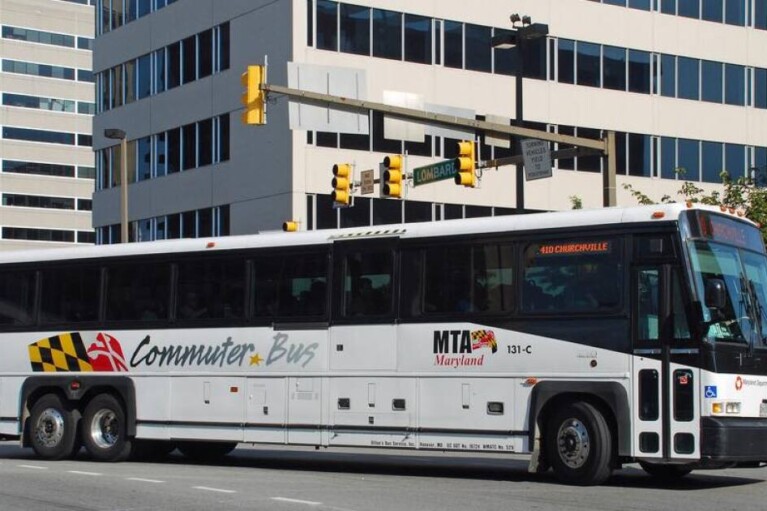Frank DeFilippo: Maryland is Putting its Embarrassment of Riches to Work

In the catchpenny world of government finance, having too much money can often be worse than not having enough.
It is demonstrably easy to say no when the treasury is empty; but it’s tough to resist temptation when the state is awash in cash.
Maryland is suffering an embarrassment of riches. The state cannot lay claim to its sudden wealth due to frugality or prudent investment. But it’s more to the persistent presence of a pesky little bug, robust income tax returns and the grudging generosity of the federal printing presses — to be paid for when (and if) Congress finally resolves the long-term debt ceiling fracas. Or, if and when Democrats dispatch the depression-era artifice for good.
One criticism of an abundant supply of cash is over-taxation. The counterpoint resolution is the return of the money to the people to whom it belongs, the taxpayers, or to invest it to their benefit.
We have a first glimpse of the impulses that are certain to rile the General Assembly when it meets to the cacophonic rattle of money at the turn of the 2022 election year and the equally noisy accompaniment of Maryland’s bottomless maw of interest groups. Nothing is as American as money.
The state’s fussbudgets pretty much agree on what to do with the unexpected largesse, and that is, like any prudent money managers, generally save some, spend some — directed mainly to those at the bottom third of the economy.
That approach is exactly the opposite of part of the bottleneck in Washington. The nation’s Democratic leaders somehow ended up with parallel programs that are proving difficult to connect — one, the debt limit, would pay for old spending; another, a cradle-to-coffin spending bill, would add on new debt; and yet a third that would rebuild the nation’s crumbling infrastructure.
The first has a temporary, short life, while the other is hung up on the price tag, not to mention the Democrats’ internal warfare and the Republicans’ irrational stubbornness. The infrastructure program appeared to be traveling safely through the necessary hoops until it got jammed by the social grab bag, a treasure hunt demanded by the newly emboldened progressive flank of the Democratic party.
No such problem is evident in Maryland — yet. Equilibrium prevails, at least for the moment. The ministers of influence individually have plans and they all look very much alike — help the elderly, the downtrodden and the dispossessed, the struggling lower rung of the economy.
Democrats and Republicans usually get along and go along except, of course, on occasional purely partisan matters, and most of the time because Republicans are greatly outnumbered — unlike Congress where you couldn’t slip a tissue between the vote margins.
Take, for example, Comptroller Peter Franchot (D). He’s figured a neat way to amplify his campaign for governor by spreading the state’s boodle. There’s $5 billion in surplus money sitting around gathering interest and he’d like to spend much of it on all sorts of desirable tchotchkes such as the Red Line (are you listening, Baltimore?). Not to sell Franchot short, he’d also stash $1.4 billion into the state’s rainy-day fund.
But essentially, Franchot coming off like a mini-me President Joe Biden, with a catch-all list of social benefits and the urge to go big — mostly one-time priorities that do not require recurring funding — such as another round of stimulus checks at $1 billion, rental assistance, aid to small businesses and a catch-up with unemployment benefits.
That last suggestion comes at an interesting intersection. While millions of jobs are begging to be filled, an estimated 4.3 million workers quit their jobs in August, according to a Labor Department report, in search of better employment opportunities and working conditions. Who knows? Maybe all the quitters will go to night school and become MBAs.
Franchot’s wish list was followed by a hint from Gov. Larry Hogan (R), a certified tax-cutter, but who, when the occasion demands, will act like a Democrat, on how he intends to parlay the State’s new-found wealth into a feel-good but vague formula, mainly on tax relief for seniors and benefits for state employees and, of course, stashing a goodly amount in Maryland’s rainy-day fund. (The rainy-day fund can act as a sanctimonious cover for not spending all the surplus money.)
Hogan’s recitation was shy of details, but it’s worth noting that many seniors do not have incomes that approach the state taxable level in Maryland.
Maryland, unlike Congress, has a number of safeguards to prevent, or at least expose, irrelevant spending, although every money bill is important to some cause or interest.
But, as with any other government function, the budgetary process is filled with asterisks and footnotes.
As every political hobbyist knows, Maryland has one of the strongest executive budget systems of any state, wherein the governor has almost total control over spending. The executive budget was adopted in 1917 after the legislature spent the state into bankruptcy.
Most demanding of all is that the budget, by constitutional requirement, must be balanced. That demand was adopted in 1974 as a ballot initiative after being recognized as a durable myth in the State House for decades.
But the legislature has chipped away at those powers gradually over the past 20 or more years by finding subtle ways to strengthen its own authority over spending and reduce the power of the governor.
One way was to allow certain shifting of funds within the budget, and another was the introduction of the “reconciliation” process, modeled after Congress’ scheme to get around certain limitations. The prohibition against shifting funds was among the strongest safeguards in the budgetary process. It prevented lawmakers from loading funds into pet projects or favorite causes at the expense of others.
And as irony would have it, roughly 80 percent of the budget is mandated spending, or dedicated money, a hands-off blockade that was established to prevent the shifting of funds for any purpose other than which they were intended.
Another control is that every money bill that is introduced in the Assembly must have a “fiscal note” attached which outlines how much the program will cost and the source of its funding.
Every amendment that is proposed must conform to the subject of the bill. Put another way, unlike Congress, where, in one memorable example, an anti-abortion amendment was attached annually to a B-1 Bomber funding bill, such sleight-of-hand is prohibited as a sly way to seek funding for unrelated programs or to stall or defeat the bill to which it’s attached.
There’s another catch, too. When the General Assembly is not in session, the Board of Public Works, the state’s highest administrative body — composed of the governor, comptroller and treasurer — assumes fiscal responsibilities for the state. It can spend, borrow, authorize, administer, raise property taxes and it awards billions in contracts every year.
In the end, only a state as wealthy as Maryland can afford elected officials as generous as ours. And that can be a beneficial thing as long as the money is invested in people, which is the most rewarding form of economic development. Idle money does no one any good.




 Creative Commons Attribution
Creative Commons Attribution